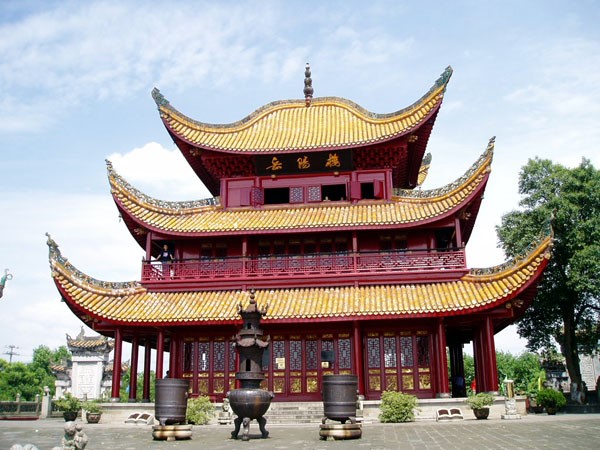Cultural Landscape
Baling Landscape
Yueyang, formerly knowns as Baling or Yuezhou, is a historic and cultural city with a long history of more than 2,500 years. Located in the northeast of Hunan Province, neighboring Jiangxi Province in the east and Hubei Province in the north, Yueyang was a hinterland of military importance during the past dynasties. Nowadays, renowned for so many historic interests, Yueyang is ranked as one of China's Top Tourism Destination Cities.
Yueyang's real charm rests with human cultural relics as well as the natural landscape. Yueyang City's attractions include Yueyang Tower, Junshan Isle, the Memorial Temple of Qu Yuan, and Zhang Guying Folk Custom Village.
Yueyang Tower

Located on the west city wall, the Yueyang Tower is one of three famous towers in South China, the other two being the Yellow Crane Tower in Wuchang and the Tengwang Pavilion in Nanchang. The predecessor of Yueyang Tower was a structure built during the Three Kingdoms period (220AD -280AD) for reviewing military parades. In the fifth year of Emperor Qingli's reign of the Song Dynasty (716), it was rebuilt, and famous Song Dynasty essay writer Fan Zhongyan wrote his famous essay "Notes on Yueyang Tower", which was considered matchless in literary beauty and profound thought. Yueyang Tower is a national 5A-level scenic area.
Yueyang Tower stands close to Dongting Lake, facing Junshan Island with the city behind. The main tower, 19 meters high, is a three-story structure supported by four pillars and made of pure wood and upturned eaves. Especially noteworthy is the tower top which resembles a helmet used by warriors in ancient times, a rarity in the history of ancient Chinese architecture. The structure is a unique combination of artistic tastes, mechanics, architecture, and craftsmanship. The tower affords a spectacular view of Dongting Lake.
Address: Dongting North Road, Yueyanglou District, Yueyang City

The islet, small enough, used to be crowned with as many as 36 pavilions and 48 temples, which were mostly in ruins at the time of liberation. Since the park was established in 1979, many historic sites have been renovated.
The Tomb of Two Concubines is enveloped in a moving story. Legend has it that the two beauties buried here were daughters of Emperor Yao, a mighty trial leader at the end of the primitive society. When Shun succeeded their father, they were married to him as imperial concubines. Unfortunately, Shun died a sudden death when he made inspection tours in present-day Ningyuan County of Hunan. The two concubines heard of his death and were heartbroken. At last, they died of grief. To commemorate them, people built the tomb in the east of the islet and renovated it dozens of times.
Address: No. 60, Dongting North Road, Yueyanglou District, Yueyang City

The temple is on the Yusishan Mountain in Miluo of Yueyang. Covering an area of 7.8 acres on top of a woody hill by the Miluo River dates back to 1756. It was surrounded by a grey brick wall and shadowed by old phoenix trees. The front gate is guarded by eight stone divine lions, and the archway is decorated with sixteen paintings about the life of Qu Yuan here. The main hall is a large structure of wood and brick with a single-eaved roof covered with yellow glazed tiles. Poetry and prose grieving the death of Qu Yuan are inscribed on the four stone walls. In the front hall is a huge wooden board inscribed with The Biography of Qu Yuan by Sima Qian.


